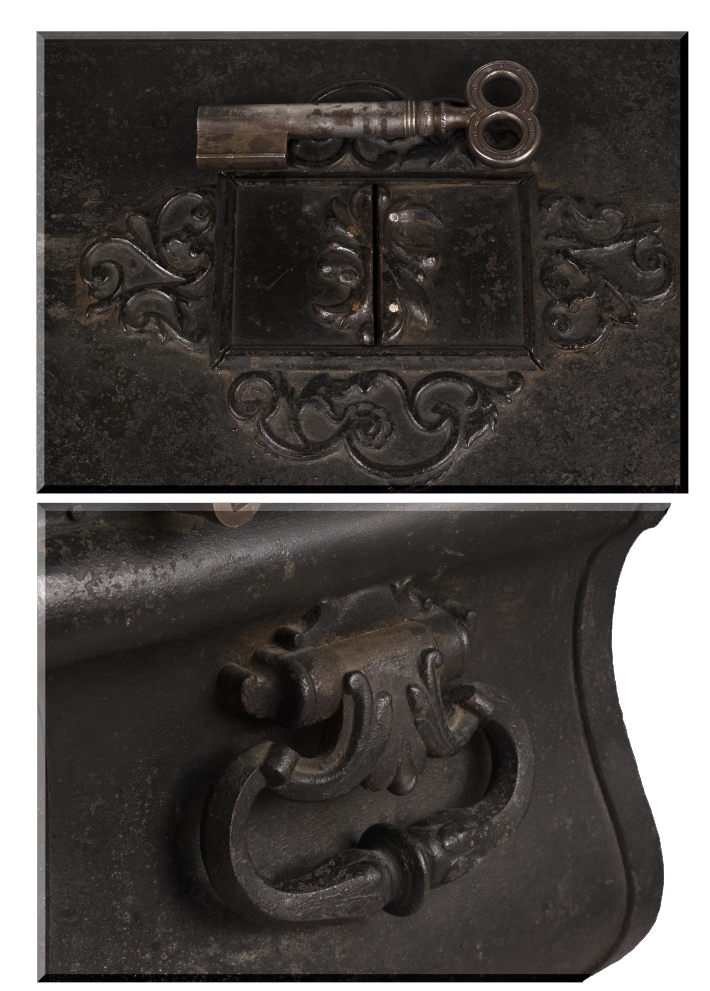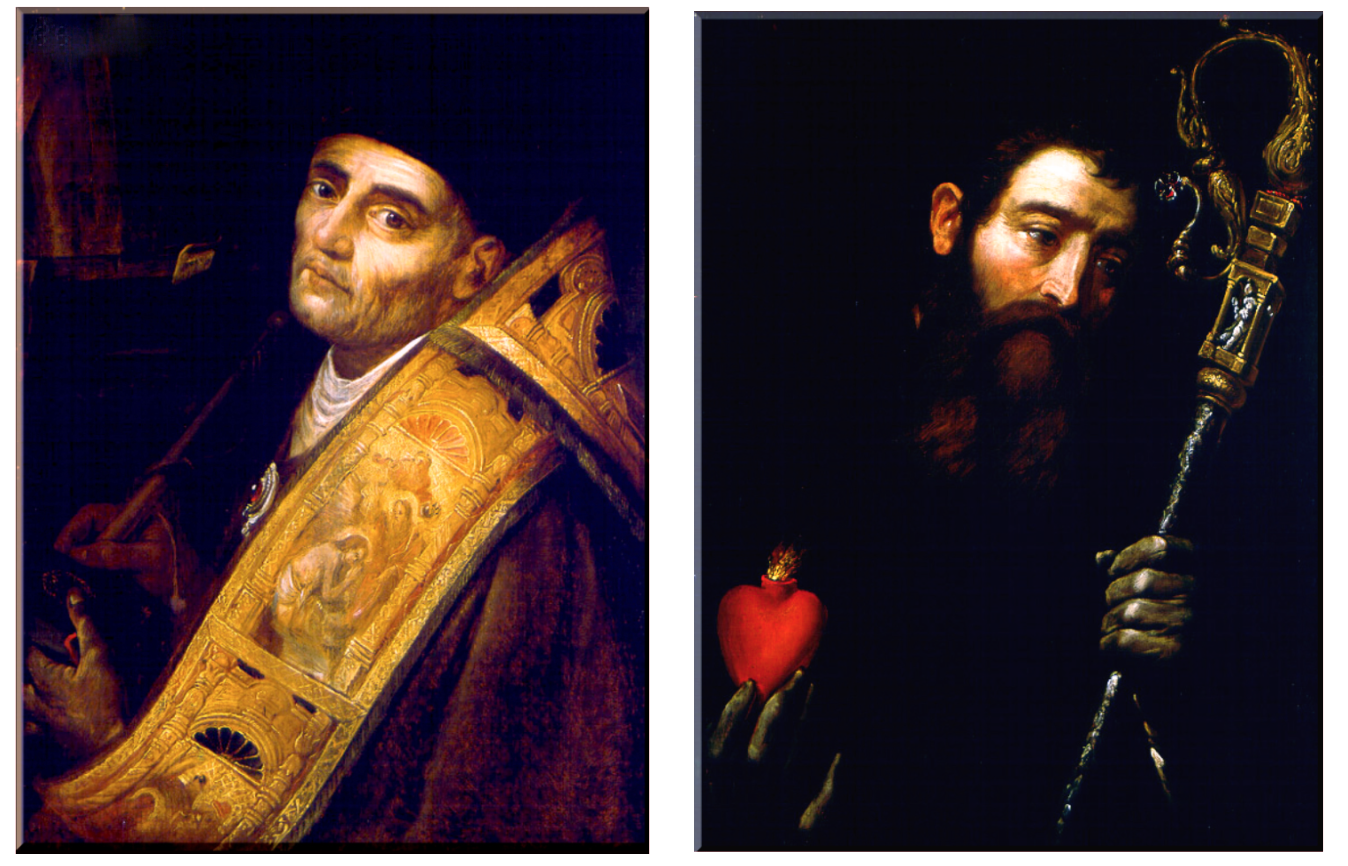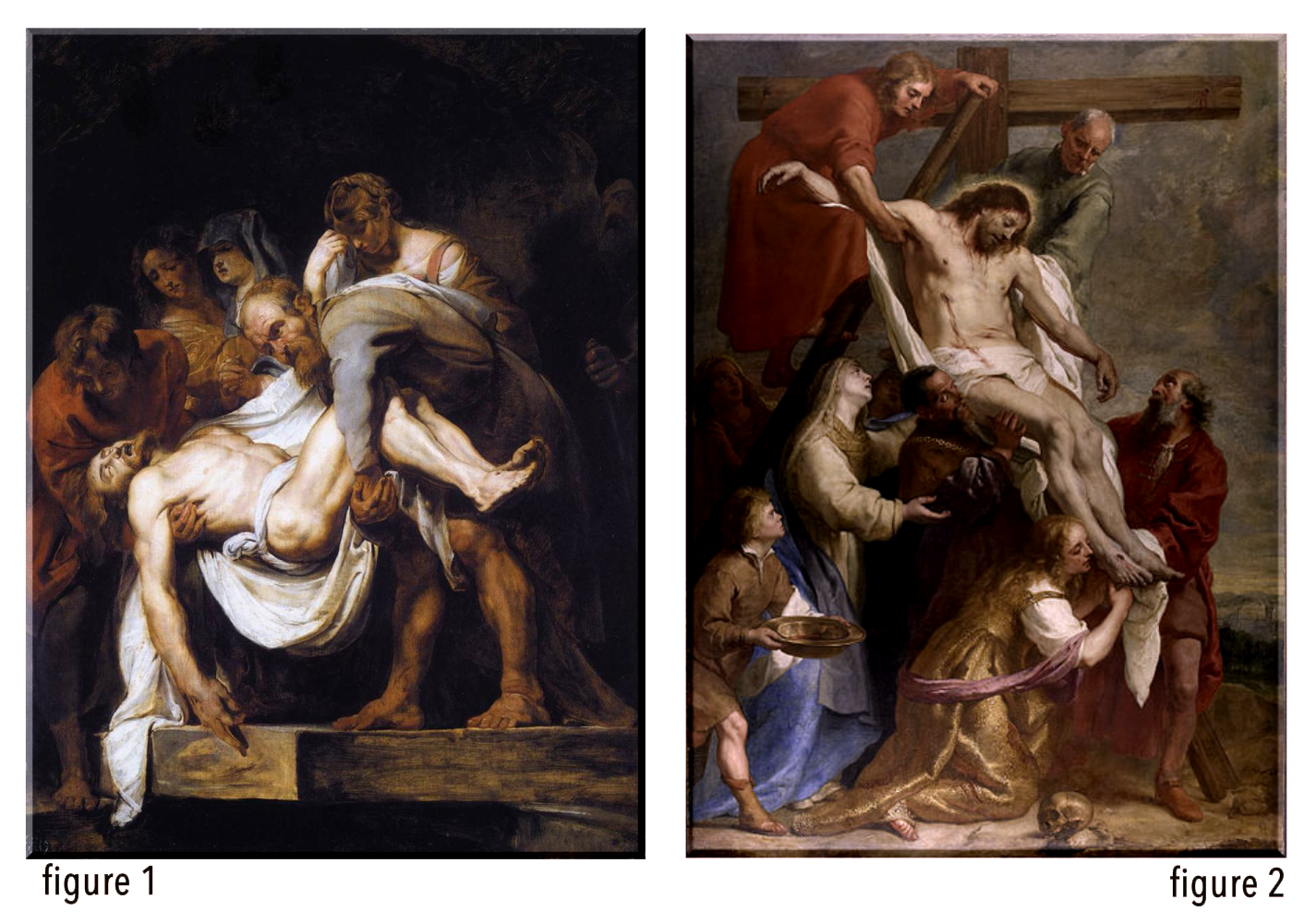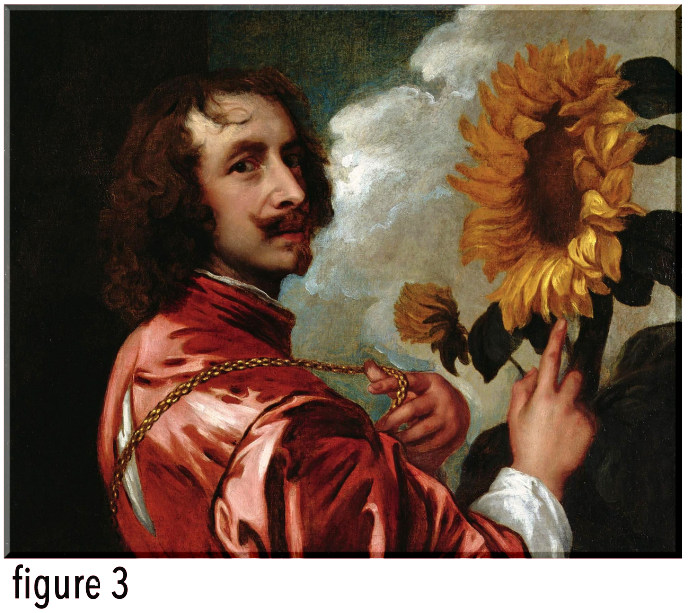The Trinity Sends St. Gabriel the Archangel to Announce to Mary the Incarnation
Pietro Novelli, called Il Monrealese
Below the image, click play to listen.
German, 17th Century
Since the fall of humanity, there has been a need to prevent theft. At the end of Genesis 3, Adam and Eve were barred from Eden to keep them from partaking of the fruit of the Tree of Life. The cherubim armed with a flaming sword became the keepers of the Garden.
Securing one’s valuables is a universal priority, and man has devised various methods to accomplish the goal. One of the most common means of protection is the safe. From hotel rooms to bank vaults, a safe seeks to provide both security and safety for treasured items including M&G’s Iron Safe, a type of strong box sometimes called a coffer, casket, lock box, or armada chest.
Safes have existed for more than two millennia—even the Romans built and used money chests to protect valuables. While locked chests were used primarily for storing and protecting special items, it was common practice through the eighteenth-century for the safe’s aesthetic design to equal the importance of its security.
 Early strong boxes were constructed of resilient and heavy wood that later was reinforced with metal straps and nails. As advancements were made in metallurgy, corresponding improvements were made in safe construction. M&G’s seventeenth-century safe would have been forged after the introduction of iron plates, and was probably crafted in Germany, where much of Europe’s iron work was manufactured. The cities of Southern Germany, such as Nuremberg, were particularly known for the craftsmanship of their blacksmiths and locksmiths, and demand was high for their lock boxes not only in Germany, but beyond.
Early strong boxes were constructed of resilient and heavy wood that later was reinforced with metal straps and nails. As advancements were made in metallurgy, corresponding improvements were made in safe construction. M&G’s seventeenth-century safe would have been forged after the introduction of iron plates, and was probably crafted in Germany, where much of Europe’s iron work was manufactured. The cities of Southern Germany, such as Nuremberg, were particularly known for the craftsmanship of their blacksmiths and locksmiths, and demand was high for their lock boxes not only in Germany, but beyond.
M&G’s safe exhibits the common elements of a top opening safe from the 17th century with a spring-loaded keyhole cover accessed by pressing a slightly disguised button. A large key releases an elaborate steel locking mechanism inside. Once unlocked, a hand crank is used to lift the heavy lid.
Joseph Aronson explains that “the security of this safe lay in its great weight, probably self-defeating even in its own day. The whole top is the lock, with a naively hidden keyhole in the decorative plate on the center. Even though it would certainly foil pickpockets and larcenous domestics, the type occurs in pictures of war booty in transit.” This safe was quite possibly bolted to a ship officer’s cabin to secure valuables and plunder.
Visit Historical Locks and LockWiki to learn more.
John Good, M&G Docent and Security Manager
Published in 2018
Oil on panel
Flemish, 1584–1669

Gaspar de Crayer spent much of his career as a painter for the elite of the Spanish Netherlands. In addition to numerous portraits, he completed a large number of altarpieces. Matthias Depoorter notes: “The motifs that he borrows from the work of Rubens are so specific that people suspect that he had contact with Rubens’s studio.” For example, the figurative influence, coloration, and brushwork of Rubens’s Entombment (figure 1) is also clearly evident in De Crayer’s Deposition (figure 2).
Depoorter goes on to point out that later in De Crayer’s career the influence of Anthony Van Dyck (Rubens most noted pupil) emerges. Critics observe that Van Dyck’s portraits are characterized by a “relaxed elegance.” But this elegance is enriched by a subtle emotional sentiment that intuitively connects the subject to the viewer. These qualities are readily discerned both in Van Dyck’s Self-Portrait (figure 3) and in De Crayer’s portraits of St. Ambrose and St. Augustine from M&G’s collection.
 Ambrose was a revered Greek scholar, poet, lawyer, and orator. Trained in politics and law he was literally thrust into an ecclesiastical life. When Auxentius, Bishop of Milan, died in 374 the Arian heresy was on the rise. During the election for the new bishop a violent outbreak seemed inevitable until the 35-year-old Ambrose stood up in the public square and gave an impassioned speech “exhorting the people to proceed in their choice in the spirit of peace.” Following his plea, the whole assembly took up the cry “Ambrose for Bishop.” Although his election astonished him, he determined to take up the task with vigor. Aware of his theological limitations he embarked on an arduous study of Scripture. He also read extensively the writings of the church fathers, especially Origen and Basil. Before long he was revered by both low and high born as a “good shepherd.” The garments he wears in De Crayer’s portrait symbolize his ecclesiastical station.
Ambrose was a revered Greek scholar, poet, lawyer, and orator. Trained in politics and law he was literally thrust into an ecclesiastical life. When Auxentius, Bishop of Milan, died in 374 the Arian heresy was on the rise. During the election for the new bishop a violent outbreak seemed inevitable until the 35-year-old Ambrose stood up in the public square and gave an impassioned speech “exhorting the people to proceed in their choice in the spirit of peace.” Following his plea, the whole assembly took up the cry “Ambrose for Bishop.” Although his election astonished him, he determined to take up the task with vigor. Aware of his theological limitations he embarked on an arduous study of Scripture. He also read extensively the writings of the church fathers, especially Origen and Basil. Before long he was revered by both low and high born as a “good shepherd.” The garments he wears in De Crayer’s portrait symbolize his ecclesiastical station.
Although Ambrose is still counted as one of the great doctors of the Western church, his reputation is overshadowed by his most famous convert, Augustine of Hippo. It is not surprising, therefore, that Gaspar de Crayer would do a companion portrait of Augustine. This work, also part of the M&G collection, was featured as Object of the Month in February 2016.
Augustine acknowledged that Ambrose was the key figure in bringing him to Christ. He records in his Confessions that, “This man of God welcomed me, as a father. As a result, I began to love him, not because of his teaching, but because of his warm and loving personality. I enjoyed hearing him preach, not in order to learn from what he said, but in order to admire and learn to imitate his eloquence. Indeed, I still despised the doctrines he taught. Yet, by opening my heart to the sweetness of his speech, the truth of his teaching began to enter my soul, little by little.” Ambrose would baptize Augustine on Easter morning in 387. Soon after Augustine returned to North Africa where he eventually became Bishop of Hippo, ruling in that turbulent African diocese for 34 years until his death in 430.
Donnalynn Hess M&G Director of Education
Published in 2018
Oil on canvas, Initialed and dated, lower right: JB 1652
Flemish, c. 1604–1668
Click on the link for additional reference information.
Among the Museum & Gallery’s collection, there are both famous and unknown artists. But what about those who fall right in the middle? What about the artists who have active careers and equal skill to the “greats,” but never achieve the fame of their contemporaries? One of these artists is the Flemish master, Jan Boeckhorst.
Jan Boeckhorst, nicknamed Lange Jan (“Tall John”) was born in Münster, Germany in 1604. At seventeen, he became a canon in the Jesuit church, but at the advanced age of twenty-two (long past the standard age for training) decided to become a painter.
In the 1620s, he moved to the coastal city of Antwerp—home to some of the greatest artists of his time. Some historians claim he studied with Jacob Jordaens while others say it was Peter Paul Rubens. More than likely, Boeckhorst studied with Jordaens because Rubens was in Spain and England in the late 1620s. Around 1634, Boeckhorst achieved the title of Master in Antwerp’s Guild of St. Luke and worked alongside the other Flemish masters including Rubens and Anthony van Dyck. Boeckhorst visited Italy twice to study the sixteenth-century Venetian masters such as Titian and Tintoretto and returned to Antwerp by 1640.
Throughout his later life, he painted a variety of subject matter including religious and mythological for church altarpieces and private collectors. His artistic work ranged from paintings, designing tapestries, and illustrating for religious books. He also contributed to the founding of the Antwerp Academy. After a full life, he died on April 21, 1668.
Despite his active career, much of Boeckhorst’s work is unknown, unsigned or wrongly attributed, so it has been difficult to compile a comprehensive list of his art. One of the reasons his work might be misattributed is his close work relationship with Rubens. There are many evidences of their collaboration based on the standard studio practice of the time. Boeckhorst would help touch up paintings under Rubens’ instructions and even assisted the master in large commissions. After Rubens’ death in 1640, Boeckhorst finished or even restored Rubens’ remaining works. An example of their collaboration is King David Playing the Harp at the Städel Museum.
In M&G’s collection, there are three paintings by Boeckhorst; of these The Adoration of the Magi is considered his greatest work in America. In the lower right corner, his initials and date are painted on a rock face: JB 1652.
Boeckhorst displays a heightened attention to texture with the wafting incense, richness of the garments, and different animals. Because of his saturated colors, graceful composition and dramatic movement, scholars consider this painting to be a masterpiece of the High Baroque style.
KC Christmas, M&G graduate assistant
Published in 2017
Oil on canvas
Click on links for additional reference information.
This dynamic seascape by a seventeenth-century French painter bears a striking similarity to a work done by a renowned Dutch master of the same period, Rembrandt van Rijn. Until the modern concepts of copyright and intellectual property, most artists of the past eagerly learned from the creative ideas and innovative troubleshooting of both those before them and their contemporaries. Part of an artist’s training involved painting copies of famous works of art or that of their master (the teacher they were apprenticed to or worked under). The diagonal composition, dramatic lighting, textures, and even to some degree, the figures in this M&G work are clearly reminiscent of Rembrandt’s Storm on the Sea of Galilee (below).
Rembrandt van Rijn (1606-1669) was born in the Netherlands, “a land of winds and water.” Located on the North Sea, twenty-five percent of the land is at or below sea level with the highest point (Vaalserberg) only 1053 feet above. Over the centuries, this geography has shaped both the nation’s history and the temperament of its people. For example, during the seventeenth century raging sea storms and lowland flooding often threatened life and livelihood, but Dutch ingenuity and resilience turned these formidable obstacles into valuable resources. (For more detailed exploration download the National Gallery of Art’s informative resource Painting in the Dutch Golden Age.)
In light of Rembrandt’s birthplace, it’s interesting that he painted only one seascape. Regardless, the dynamic composition and nuanced atmospheric beauty of his Storm on the Sea of Galilee reflects an intimate knowledge of storm-tossed seas. Rembrandt was only 27 when he painted this work, and art historians have speculated that the choice of subject indicates a youthful preference for action-packed scenes. Whatever his motivation, the scene clearly adumbrates the dramatic chiaroscuro and nuanced visual texture that would become a hallmark of his work.
Sadly, we are limited to experiencing the work through reproductions. On the night of March 18, 1990, two thieves dressed as police officers entered the Isabella Stewart Gardner Museum in Boston, bound the museum’s security guards, and made off with thirteen of the gallery’s prized masterworks, including Rembrandt’s famous seascape.
Artists today are still honing their skills by studying and copying such masterworks. As contemporary artist Lisa Marder acknowledges, it is “one of the tried and true techniques of classical art training.”
Donnalynn Hess, Director of Education
Published in 2017